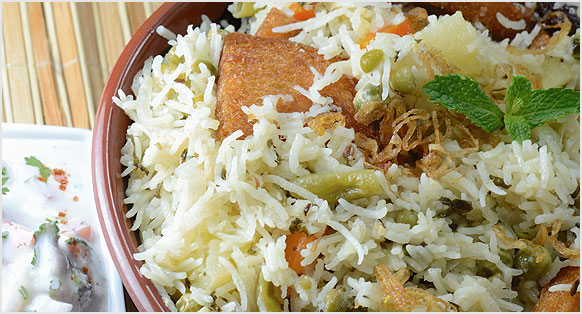
Whenever we think of India we think as a land of festivals. Every festival in India epitomizes the social, cultural and religious aspirations of the people. Every festival brings with it few days of happiness and joy in the life of the people. Navratri, or 'The Festival of Nine Nights', is celebrated during the first nine days of the Hindu month of Ashvin (September-October). The festival is dedicated to the worship of Mother Goddess or Shakti and her nine forms. This season is considered to be an auspicious one as it is generally associated with the sowing of seeds. People sow seeds on the first day, consecrate the planets, watch the sprouting and worship Goddess Durga during this festival. The last three days are especially considered most important. The nine-day is equally divided in worshiping three goddesses. The first three days are dedicated to Goddess Durga. The next three days are spent in worshipping goddess Lakshmi and the last three days are dedicated to Goddess Saraswati. The day after Navratri the festival of Dussehra is celebrated.
The festival of Navratri acquires quite a fascinating and colorful dimension in the region of Gujarat, and in some parts of Rajasthan and Maharashtra. The highlights of the festival are the extremely colorful dances of Garbha and Dandiya-Rasa where men and women of all sects perform. The Rasa has its origin in the life scenes of Lord Krishna and is associated with the agricultural rites while Garba is performed only by men and is related with the fertility cult or the mother aspect of Navratri. In the south, Dusshera is very popular while in the east, the seventh to the tenth days of Durga Puja are celebrated with much vigor and enthusiasm. Besides the Garba Dance of Gujarat, the most popular events on the auspicious occasions of Navratri are Ramlila of Varanasi, Dusshera of Mysore and Durga Puja of Bengal. All these celebrations have a special significance according to their region. The rituals are based according to the culture and traditions of that particular region.
Dussehra is regarded one of the most significant and important Hindu festivals, celebrated across the nation with much fervor and gaiety. The festival marks the victory of Lord Ram over demon king Ravana, which means the victory of good over evil, light over darkness. Beautifully decorated tableaux and processions depicting various episodes from Ram's life are taken out on the streets. The tenth day or the Vijayadasami, is considered to a very important day. Effigies of Ravana, his brother Kumbhkarna and son Meghnad are burnt in open spaces. Actors dressed as Ram, his wife Sita and brother Lakshman arrive and shoot arrows of fire at these effigies, which are stuffed with firecrackers. As a part of the celebration Ram Lila (drama depicting the episodes from the lives of Ram, Sita and Lakshman) are staged in different regions of the country. It is celebrated in different manner across the country. Besides Bengal and Central India, Dussehra Parva is celebrated in other Indian states with equal zeal and enthusiasm though with regional differences.
The nine days celebration of Dussehra in Tamil Nadu have been equally divided for worshipping the three Goddesses namely Lakshmi (the first three days are dedicated to the Goddess of wealth and prosperity), Saraswati (the next three days are dedicated to the Goddess of learning and arts) and Durga (the last three days are dedicated to Mother Goddess, Shakti). Dussehra is celebrated in Punjab after nine days of fasting during Navratri while Garba dance and music reigns the evenings and nights of Gujarat during the ten days of the festival. In Himachal Pradesh, the festival is marked by the grand processions of the village deities of the hill people. While in Mysore the festival is celebrated by the famous gala procession of richly bedecked elephants on the brightly lit streets of the city on. In West Bengal Duga puja marks the celebration of Dussehra. It is the most important festival of the Begalis. It is celebrated for a period of five days across the state.
In Tamil Nadu, Andhra Pradesh and Karnataka, families decorate dolls (Bommai Kolu) and prepare an elaborate spread of lamps and flowers. Women traditionally exchange gifts of coconuts, clothes and sweets. Vijayadasami is also considered an auspicious occasion for children to commence their education in classical dance and music, and to pay homage to their teachers. In Mysore the festival is celebrated by the famous gala procession of richly bedecked elephants on the brightly lit streets of the city on. In West Bengal Duga puja marks the celebration of Dussehra. It is the most important festival of the Begalis. It is celebrated for a period of five days across the state. Devotees wear new clothes.
 Easy recipes
Easy recipes
 Healthy Recipes
Healthy Recipes
 Dessert Recipes
Dessert Recipes
 Mutton and Lamb
Mutton and Lamb  Indian Bread Recipes
Indian Bread Recipes
 Dal Recipes
Dal Recipes
 Chutney and Pickles
Chutney and Pickles  Indo-Chinese Recipes
Indo-Chinese Recipes
 Snacks and Appetizers
Snacks and Appetizers
 Low Fat Recipes
Low Fat Recipes
 Chaat Recipes
Chaat Recipes
 Biryani and Rice
Biryani and Rice  Curry Recipes
Curry Recipes
 Indian Sweet Recipes
Indian Sweet Recipes
 Egg Recipes
Egg Recipes
 Paneer Recipes
Paneer Recipes
 Chicken Recipes
Chicken Recipes
 Indian tiffins
Indian tiffins
 Egg less Recipes
Egg less Recipes
 Soups and Salads
Soups and Salads
 Indian Sea Food
Indian Sea Food
 Manchurian Recipes
Manchurian Recipes
 Indian Drinks Recipes
Indian Drinks Recipes
 Dinner Recipes
Dinner Recipes